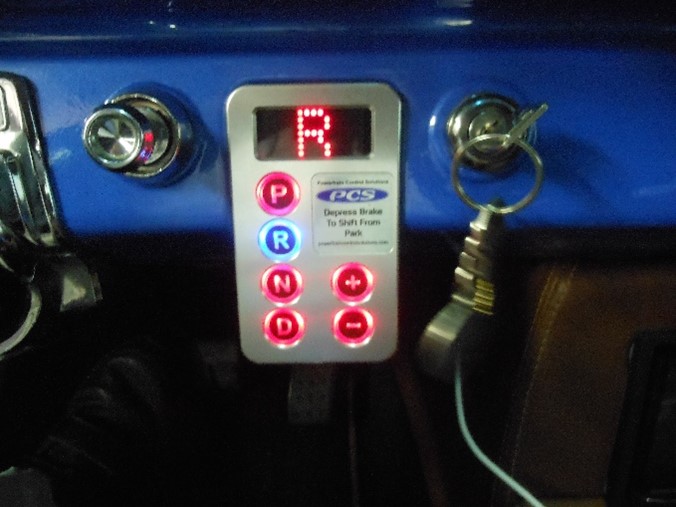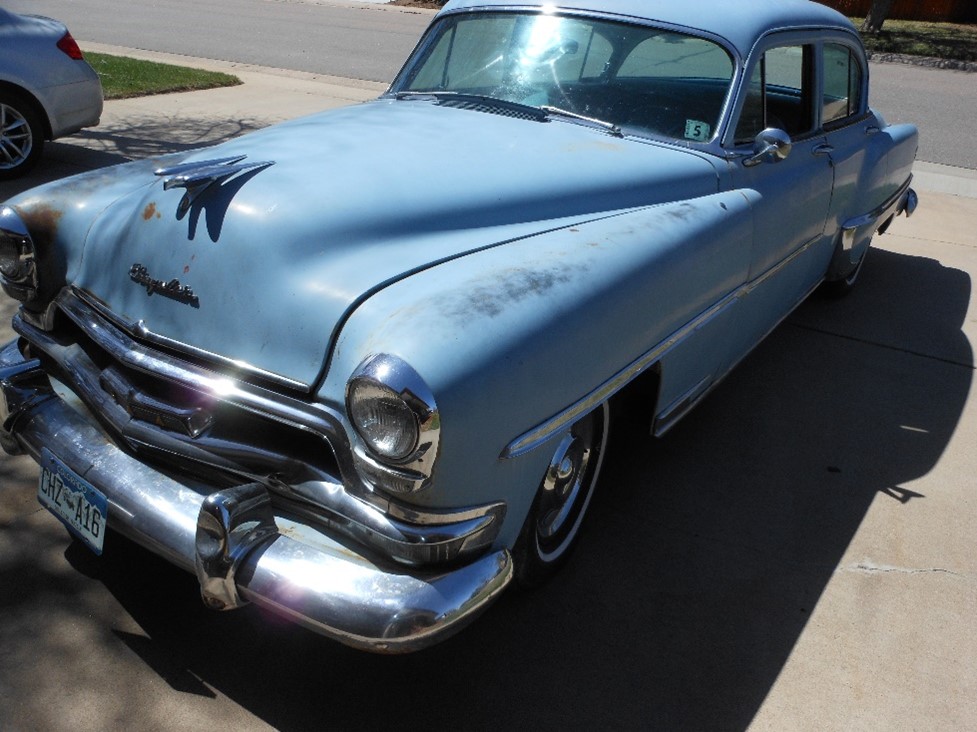Disturbing events over the past month have led me to believe that the behavior of my restoration cars is mimicking the darker side of human behavior. They have exhibited resentment, class struggle and sexual deviation. Let me explain as I am sure that most of my readers have not experienced this phenomenon, so they need to be made aware of it in order to not be blindsided by their own project vehicles.
 Let’s start with the resentment exhibited by the Bluebird, my 1962 Pontiac Catalina masquerading as the more upscale Bonneville. It is exhibiting identity problems that has resulted in public misbehavior. Born a humble Catalina with a base motor, it has been transformed into a more upscale Bonneville by virtue of a badge in its replacement grill.
Let’s start with the resentment exhibited by the Bluebird, my 1962 Pontiac Catalina masquerading as the more upscale Bonneville. It is exhibiting identity problems that has resulted in public misbehavior. Born a humble Catalina with a base motor, it has been transformed into a more upscale Bonneville by virtue of a badge in its replacement grill.
It has also had a motor change from the feminine base motor to a masculine LS3 transplant. I thought these changes were in its best interest as it could now join, with some distinction, modern automotive culture. I think it feels different about that than I do. Here’s why:
 I drove it to the “11 O’Clock on Friday Club” to give it a chance to show off its transformation. We were late on arrival due to my exercise class, so the parking spaces were full. I decided to briefly block the driveway as the club would soon be leaving for the ceremonial Friday lunch. My Pontiac Catalina was the center of attention as the members left the building to drive to lunch. One of the more senior members accepted my offer of a ride to the restaurant so he could experience the performance that is the result of the transformation. I started the engine and selected reverse gear on the sexy push button transmission and pushed down on the accelerator pedal.
I drove it to the “11 O’Clock on Friday Club” to give it a chance to show off its transformation. We were late on arrival due to my exercise class, so the parking spaces were full. I decided to briefly block the driveway as the club would soon be leaving for the ceremonial Friday lunch. My Pontiac Catalina was the center of attention as the members left the building to drive to lunch. One of the more senior members accepted my offer of a ride to the restaurant so he could experience the performance that is the result of the transformation. I started the engine and selected reverse gear on the sexy push button transmission and pushed down on the accelerator pedal.
The engine revved up, but the car remained stationary. Successive attempts to make it move failed, and I had to suffer the indignity of being pushed out of the driveway and onto the street where my distinguished passenger opted to ride in another car. Utter humiliation!
Once on the street, my Catalina went into gear, and I drove away with no problem. Of course I was dismayed and needed to find what caused this malfunction. The entire drivetrain of the car is new, including the engine and transmission. Due to interference with the A/C hoses, it is equipped with an aftermarket transmission dip stick. Perhaps the dipstick does not have a proper calibration, and the transmission pump is starved due to the downhill slant of the driveway. That weekend with Johnathon in my service pit, I cycled the transmission through the gears to verify proper engagement. All was in good working order. To replicate the malfunction, I parked the car on my friend’s steeply sloped driveway and let it sit there for 30 minutes hoping to reproduce the problem. After the elapsed time, I got in, started the car, put it in reverse, stepped on the throttle, and backed it out of the driveway. It has behaved totally normal ever since. What the hell is going on?
This behavior is on top of another behavior that cannot be explained. On the open road at higher speed, the Catalina started to run like it had a cylinder misfire. A quick look by an Elway Chevrolet specialist revealed the there was a problem with the accelerator pedal. This was a courtesy test with no time to evaluate further. Johnathon, who is a regular mechanic at the Toy Doctor garage and works with me Sunday mornings on the Bluebird, has solved many small problems. We traced the accelerator pedal wiring and did some operational tests. He found an interference spacing on the connection to the throttle body that was corrected. Other than that seemly nonfunctional observation, everything seemed to be working properly. On a day after normal working hours at his garage, he used the shop diagnostic tester and found that the accelerator pedal had no malfunction. A subsequent highway drive exhibited no performance problems. The Bluebird is behaving properly now.
So what is going on? It is my suspicion that the Catalina is making atonement for past petulant behavior. It is becoming more mature and comfortable in its transformation and has decided to stop harassing me. It is thus mirroring some social behavior that is part of the human condition. I hope you can accept and appreciate this observation.
IS IT CONTAGIOUS?
The behavior of the Pontiac has me worried about what will happen with the 1954 Chrysler transplant. I am converting a solid, original paint, no rust 1954 Chrysler four door Windsor from a conservative, reliable and boring six cylinder flathead powered dull car to an exciting Chrysler C300 hemi-engined performer. I will also be messing with its running gear and rear end. It is going to have a playgirl heart in a dowager body. I just hope it can adjust its behavior and not get further caught up in class struggle. As originally built, it is a class below its high class New Yorker sibling, which had a hemi-engine from the factory along with a much nicer interior and flashy paint job. I am sure that it resented the New Yorker’s higher status among other cars of the era.

Once its horse power is more than doubled, and its brakes made larger by 50% with a replacement of the small drums by drums from the very powerful 1961 Chrysler 300G, as well as its old virgin rear end replaced with a sassy late model design, it may have an identity crisis. It will have performance beyond the New Yorker, but it will be trapped inside its original (and now) patina preserved body, and a cleaned up original base interior. Will it revel in its new, but unrecognizable, upgraded existence, or will it be resentful that it is now forced to be something that it was not designated to be at birth?
I have started the transformation by removing the flathead six engine and welding in new motor mounts. The front clip is off, and the frame and running gear from the firewall forward are revealed and ready for restoration. For an old lady, the frame is in excellent condition, but it is in need of some toning. It was slathered in 68 years of accumulated makeup in the form of hardened grease. It resisted removal and required that I use 100 pounds of blasted silica sand to remove it rather than simply scraping it off.

Is she holding on to the past and resentful about the transformation? Only time and more effort will reveal her intentions.
I present these rather alarming case studies as a service to my readers who may encounter similar problems. I do not know if there is a psychiatrist for cars to help you deal with problems like this if you should encounter them. Just use good common sense and march forward is my advice. After all, they are just mechanical devices incapable of emotional response. Or are they…?
